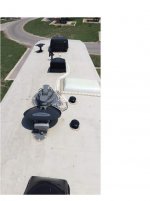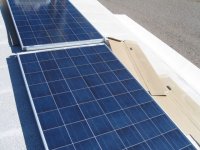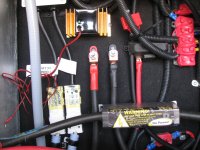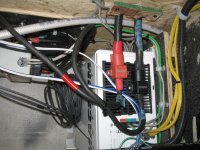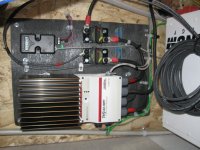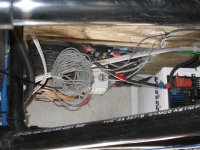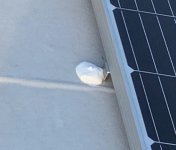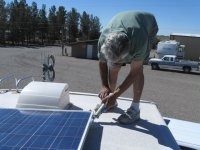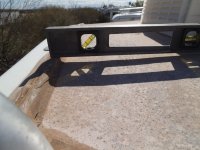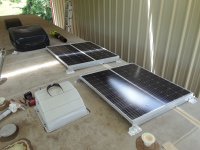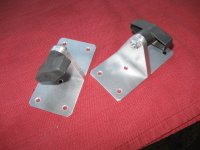esscobra
Well-known member
here what I will be installing:renogy as they have been really great with questions before purchase, had 20% sale , and scored one of there 170ah lithium batteries new for next to nothing-
2 total 170/ah lion batteries
renogy 60 new rover mppt controller
Victron battery monitor
PD9180ALV lithum converter/charger
6 100w panels - 2 sets of 3 in series - then paralleld to charge controller
for now planning on mounting controller in large space that behind basement wall - which I removed some to make more useable storage area-so have easy access and visual access as well- relatively centered and right where I plan on bringing down cables from panels - and future plans to batteries ( 1- more )and inverter -for now I will be just replacing the factory batteries in front compartment - as I have not made decision on which brand inverter/charger system I want to go with- and going to continue to use factory inverter for fridge - goals for now are just to learn system and have more power and longer run times for resi fridge during travel and day time so to cut down on generator running time
so plans are to mount panels as follows- ( ref roof pic ) 3 towards front - 2 on door side in front of bath skylight and 1 on other side paralleled and 3 all together side by side nearer to middle behind center max air vent ( at bottom of pic ) will run wires down by two vents before skylight in pic - in series then paralled down to controller- techs recommended that this ay the front 3 which in parks will usually have more direct sun will still produce higher output than the three in middle which in rv parks are likely to sometimes be in shade-
my main question is what points and how many mounts are you using per panel ? what type - length screws? and any issues with panels lifting or buffering when traveling at highway speeds?
thanks for help in advance
2 total 170/ah lion batteries
renogy 60 new rover mppt controller
Victron battery monitor
PD9180ALV lithum converter/charger
6 100w panels - 2 sets of 3 in series - then paralleld to charge controller
for now planning on mounting controller in large space that behind basement wall - which I removed some to make more useable storage area-so have easy access and visual access as well- relatively centered and right where I plan on bringing down cables from panels - and future plans to batteries ( 1- more )and inverter -for now I will be just replacing the factory batteries in front compartment - as I have not made decision on which brand inverter/charger system I want to go with- and going to continue to use factory inverter for fridge - goals for now are just to learn system and have more power and longer run times for resi fridge during travel and day time so to cut down on generator running time
so plans are to mount panels as follows- ( ref roof pic ) 3 towards front - 2 on door side in front of bath skylight and 1 on other side paralleled and 3 all together side by side nearer to middle behind center max air vent ( at bottom of pic ) will run wires down by two vents before skylight in pic - in series then paralled down to controller- techs recommended that this ay the front 3 which in parks will usually have more direct sun will still produce higher output than the three in middle which in rv parks are likely to sometimes be in shade-
my main question is what points and how many mounts are you using per panel ? what type - length screws? and any issues with panels lifting or buffering when traveling at highway speeds?
thanks for help in advance

